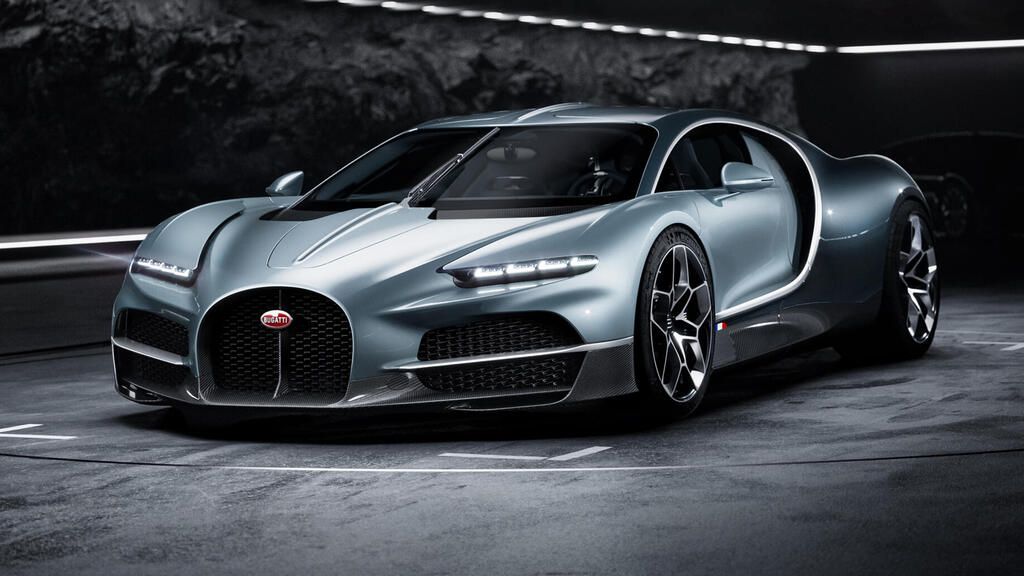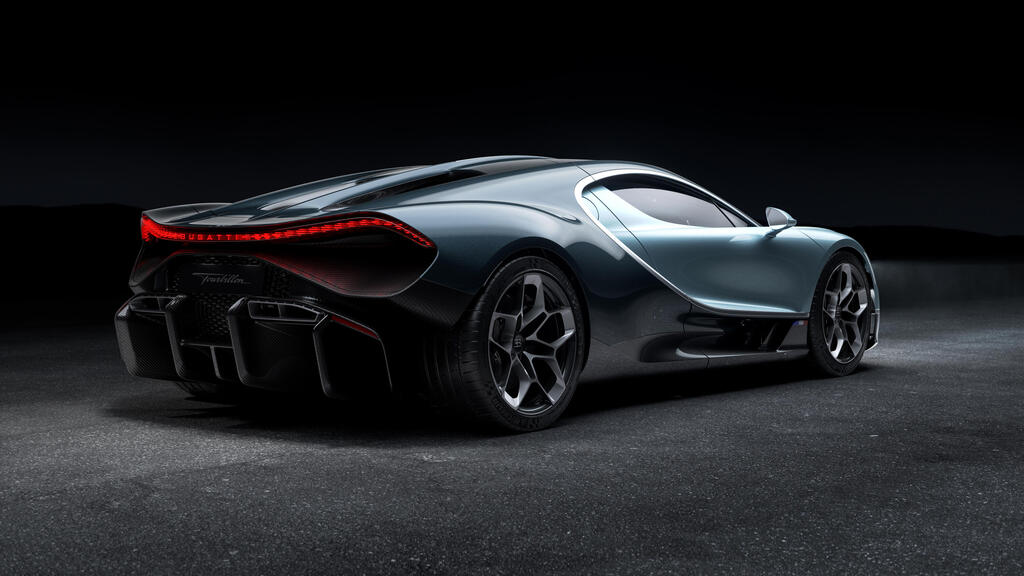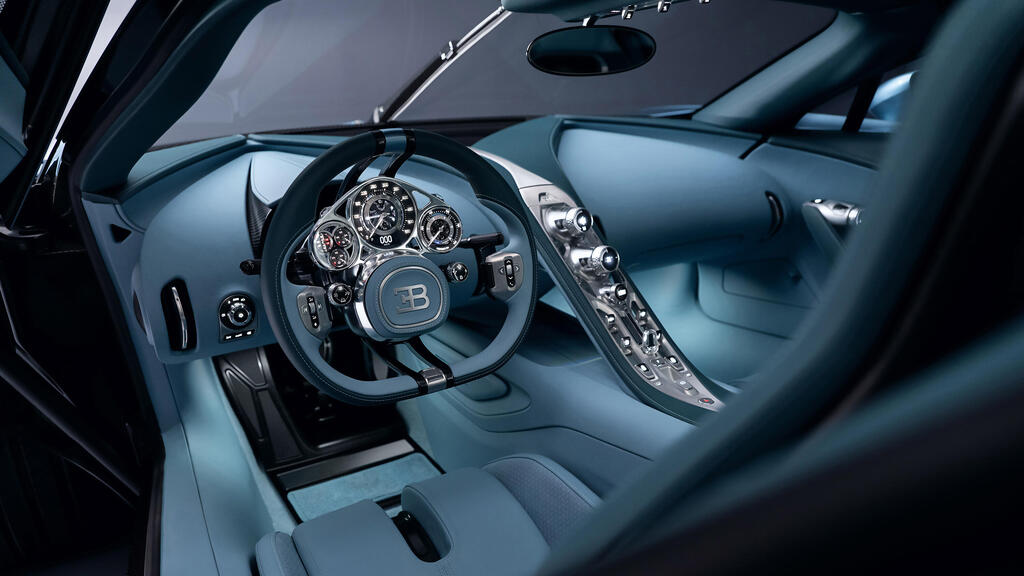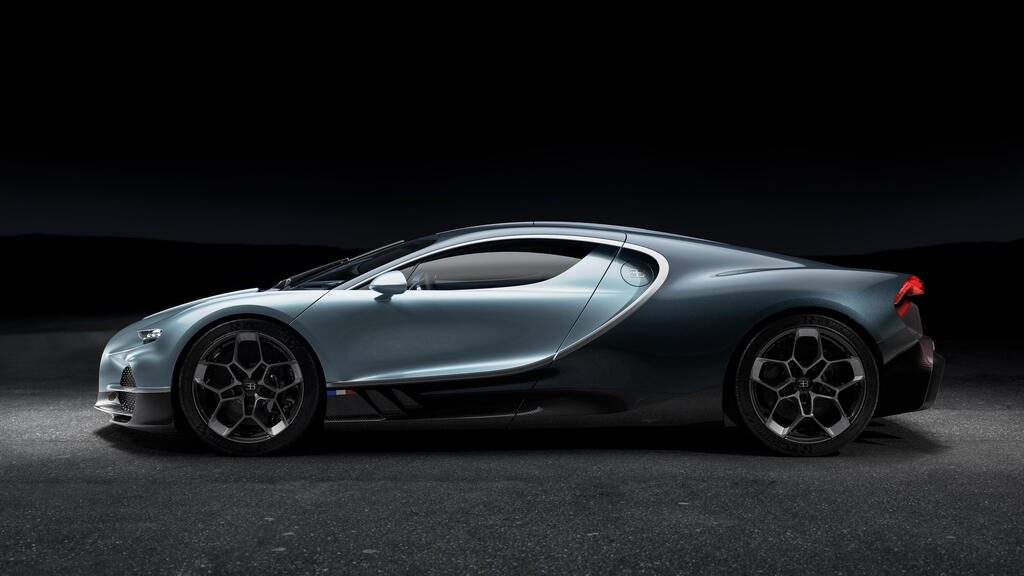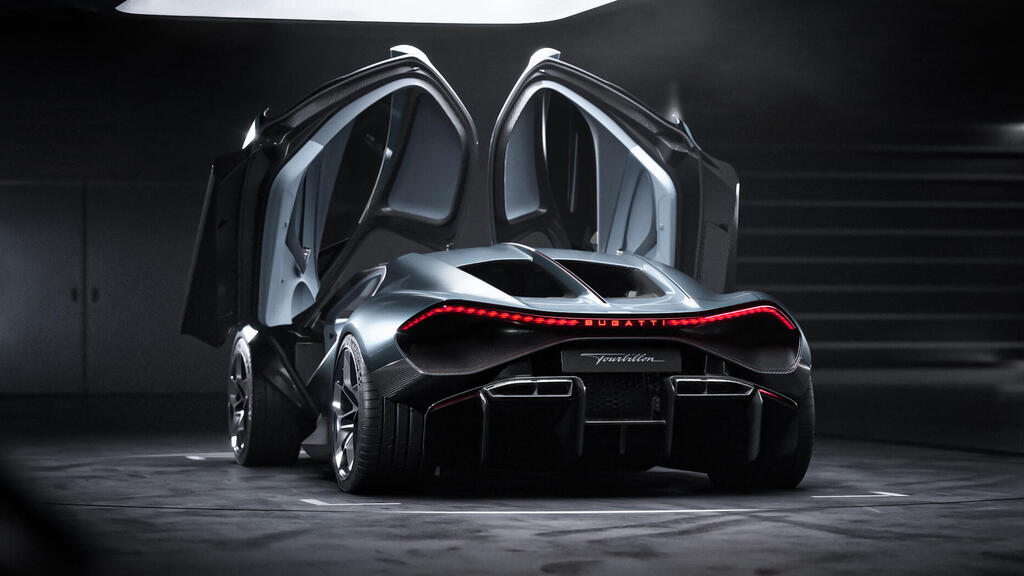Getting your Trinity Audio player ready...
Bugatti has unveiled the Tourbillon, the successor to the iconic Chiron and the first vehicle from the brand since its merger with Croatian automaker Rimac.
Production of the car will be limited to 250 units, and the price will be about $4 million.
The powertrain combines a newly developed Cosworth engine, an 8.3-liter V16 producing 1,000 horsepower with a redline at 9,000 RPM, sending power to the rear wheels.
Additionally, three electric motors, each generating 340 horsepower, provide a combined output of 800 horsepower. Two motors are connected to each front wheel, while one is situated between the gasoline engine and the new 8-speed dual-clutch transmission, delivering power to the rear wheels via a limited-slip differential. This setup results in an all-wheel drive.
The combined output is 1,800 horsepower, offering performance superior to the outgoing Chiron. The Tourbillon accelerates from 0 to 100 km/h in 2 seconds (0.4 seconds faster), 0 to 200 km/h in 5 seconds (1.1 seconds faster), 0 to 300 km/h in 10 seconds (3.1 seconds faster), and 0 to 400 km/h in 25 seconds (7.6 seconds faster). The top speed, using a special key, is 445 km/h, 25 km/h higher. A 24.8 kWh battery allows for a zero-emission range of approximately 60 kilometers.
The car features a new carbon chassis, with the longitudinally placed battery enhancing structural integrity. Engineers maintained similar passenger space to the Chiron, despite the longer engine (40 cm longer than the W16) and comparable weight (1,995 kg) despite the added battery weight.
One of the standout components is the new multi-link suspension system with 3D-printed aluminum arms, which are 45% lighter than the Chiron’s suspension setup.
The braking system, developed by Brembo, includes ceramic discs and a brake-by-wire system. Michelin Pilot Sport Cup 2 tires (285/35 front, 345/30 rear) on 20-inch front and 21-inch rear wheels ensure optimal grip. The exterior design evolves from the Chiron, with a sharper front end that reduces frontal area and improves aerodynamics. Air intakes below the headlights channel air to the large rear intakes. The massive rear diffuser and a retractable spoiler contribute to downforce and act as an air brake.
Entry to the cabin is via upward-opening doors, making access easier compared to the Chiron. The driver and passenger seats are fixed to the floor, with adjustable steering wheel and pedal box for a customized fit.
The analog dashboard, developed by Swiss watchmaker Concepto, is centered on the steering wheel and rotates with it. It features a central speedometer and tachometer, a power gauge for both the gasoline and electric motors on the right, and water, oil, fuel, and battery gauges on the left. The central console includes controls for various systems and a retractable screen for smartphone mirroring.
Our take: Ettore Bugatti founded the company, Ferdinand Piëch revived it, and Mate Rimac seems the ideal person to lead it into the future after 115 years. The young Croatian has managed to preserve the brand’s design and engineering DNA, enhancing it with electric assistance that complements rather than replaces the gasoline engine. Highly impressive.


